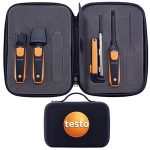Australia’s import and export food industry is of extreme importance to the national economy in more ways than one.
According to Department of Agriculture, Fisheries and Forestry data, the value of food exports topped $30 billion dollars for domestic traders during the 2011-2012 period. As well as this, food imports also contributed $11.3 billion towards the national economy.
These figures are fairly significant for Australia. However, they also reiterate the fact that any small problems in the manufacturing process or during transportation in or out of the country could cause long lasting problems in the sector.
Compulsory labelling for seafood industry?
Although the bulk of seafood served in high value restaurants is caught by local fishermen, close to three-quarters of the seafood eaten by Australians is shipped into the country.
This might come as a surprise to some, but the Australian Barramundi Farmers Association estimates that 60 per cent of the 20,000 tonnes of barramundi consumed in Australian annually is coming into the country via foreign fisheries.
With the discrepancy between what people think they are eating and what they actually are widening, the National Seafood Industry along with four other major seafood bodies has called for compulsory labelling to be extended to the restaurant industry.
“There’s a requirement to know the fish species, but not whether it’s Australian. They have the right to make a full purchasing decision,” Scott Wiseman of the Seafood Industry Alliance told Food Magazine.
Temperature importance
As the bulk of Australia’s seafood comes from overseas, there is an overwhelming importance for both importers and suppliers to correctly monitor and adjust the temperature of frozen and fresh fish.
Particular species of fish are very valuable and the slightest temperature change can ruin an entire batch of imports. This will not only cause significant financial damage to a business, but could also be harmful to anyone who subsequently ate any of the spoiled catch.
To assist in this process, businesses involved in the food industry need to invest in digital thermometers that can accurately monitor and alert staff to any changes.
In seafood shipment situations, one option is the testo 105 – Frozen Food Thermometer which is perfect for monitoring frozen foods en route to shops and restaurants. The cork screw style measurement device can be lodged into boxes to check temperatures, or can be left on the truck or in the refrigerated storeroom.
Asian opportunities
Focusing on the equally important export industry, a number of new opportunities for businesses have been highlighted by the Australian Food and Grocery Council (AFGC). Australia has a long and rich history exporting our valuable foods to mainly other Western countries, however, a number of new countries are now firm targets.
According to AFGC, Australian snacks, beverages, baked goods and condiments are now in high demand in Malaysia, Thailand and China.
The AFGC’s CEO, Gary Dawson explained these markets are prime for exports given current trading conditions.
“FGC Market Insights focus on three key markets: Thailand and Malaysia because of improved access under the respective trade agreements; and China due to the long term food consumption forecasts,” he said.
There are a number of barriers for exports such as limited resources and funding, however, a bigger barrier to overseas success is meeting the importing country’s strict biosecurity and quality standards.
Humidity and data logging
A mix of different weather conditions and the length of shipment can dramatically affect the quality of the food when it gets into port. To combat these issues and avoid penalties and loss of business, it is important to have controls in place during transportation.
This can include tools like data logging devices, which are ideal for monitoring temperatures and the humidity of sensitive goods in storage.
Data loggers can be used to check building or ship climates continuously, in order to ensure your products are the same quality on arrival as they were on packaging.









 Reduce cooking oil costs while ensuring quality
Reduce cooking oil costs while ensuring quality Expert knowledge on CO2 monitoring
Expert knowledge on CO2 monitoring Refrigeration knowledge - in 3 modules
Refrigeration knowledge - in 3 modules



